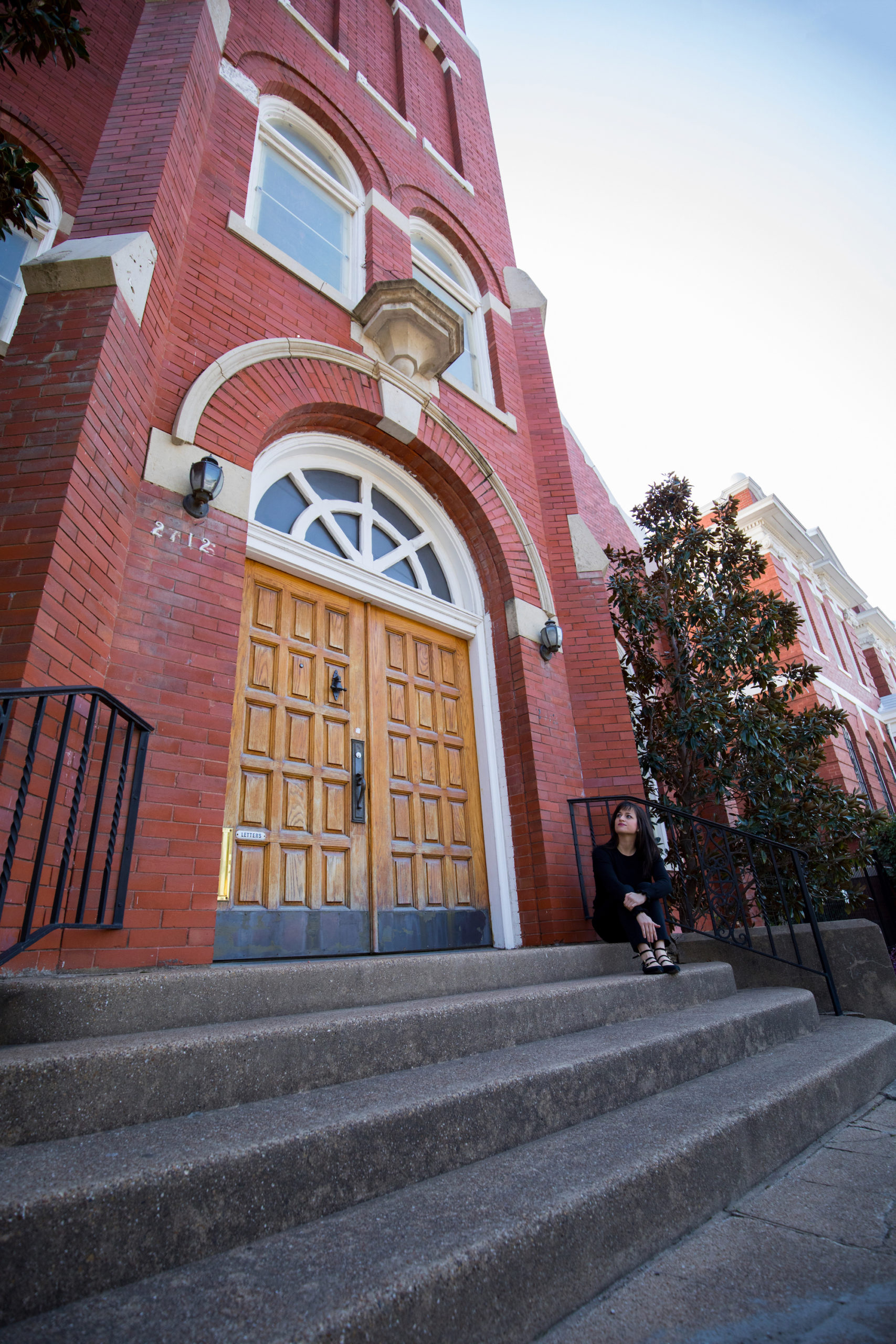Martha and Me: Learning to Worship Again

My black dress folds softly across the red velvet pews. I sit quietly in the still sadness, waiting my turn. I’ve never liked funerals. As the rest of the attendees sing a hymn, I move slowly, legs trembling, to reach the podium. Leaning against the wooden frame, my fingers nervously shuffle my crinkled notes.
“If my grandmother could tell you anything now, I think that she would like you to know Martha’s story,” I begin.
Martha, Martha. How her story touches mine so deeply. Whether in the throes of ministry or in grief, I am like Martha.
I grew up in a strong Christian family, and I dreamed of attending seminary. I watched DTS chapels online, and read books by DTS grads. I studied my Bible, attended mission conferences, and graduated from a Christian college. Although many warned that familiarity would breed numbness, I have found that, like Martha, my soul aches most in anxious toil and tragedy. Because toil and tragedy comprise my life and yours too, I wonder, what does it mean to learn to worship Christ, again, whether through the constant stress of ministry or never-ending tasks, or in the horrible grasp of grief?
A Process of Faith
I was sitting in a Chinese Bible study when, for the first time, I recognized my similarity to Martha. I still have my scribbled notes on my notecard, faded from use. Even though it was a translated lesson, the pastor’s message pierced my heart in poignancy. As I wrote frantically trying to keep up with his words, tears flowed down my cheeks.
“Why is this such a struggle for me?” I asked him afterwards. “Jesus cared for Martha, and he cares for you too. That’s the beauty of seeing Jesus interact with different people in the Bible. These narratives help us to relate to him personally.”
Like Martha, I have found that in my anticipation to serve Jesus, I forget to worship. The pressure and stress of societal expectations overwhelm me. Whether preparing for a church ministry event, comparing my capacity and limitations to another person’s, or trying to schedule coffee with a friend, I cannot meet the ideals of what a Christian woman should look like or do.
Often, I feel like I am trying to twirl several hula hoops at the same time, but they keep bumping into each other and I drop them. In seminary, other students often ask, “How many hours do you take? How much do you work? Where’s your internship? What Bible study are you in? Are you keeping up your family relationships?”
I must confess, I respond via verbal acrobatics in order to hide my shame in answering these questions because I know that my answer is never enough. Additionally, the culture—shaped through the buzz of notifications, personal branding, and picture filters—constantly tells me, “I am important. I am successful. I always have my life together.” In contrast, I find myself distracted, frantic, anxious, and self-serving when my attention stays centered on trying to meet others’ expectations.
When Jesus came to Martha’s house, she gladly welcomed him. Yet, instead of focusing on her guest, Martha pulled away to serve. How often does a busy schedule, full of good and necessary things, distract us from the one necessary thing? Jesus’s response is not one that shames Martha, but instead he kindly reorients her perspective away from her circumstances and to his person. If I do not take the time to do the one thing necessary, that is, sit at the feet of Jesus, then my ministry and serving no longer stay other-focused but self-focused. What could have acted as a locus of redemption by God’s grace is only harried activity conformed to a worldly culture.
Silence and solitude allow moments of quiet meditation on God’s Word. They realign my priorities and perspective to Christ so that I can make difficult decisions that are kingdom-focused rather than self-focused. Worship transforms into a response to our gracious God, as we desire to love him and reflect the beauty of his glory in our lives. If I do not recognize my finitude and sit quietly in his presence, I am overwhelmed by a noisy culture, and I forget to worship God, my portion and my cup.
Mystery and Grief
 Our life on earth is marked by death. Despite all that is good and joyful in the world, the temporality of life is overwhelming and the inevitability of suffering and death is ominous. I seldom feel comfortable in this tension, but when I observe the life of Jesus, I see that he calls us to so much more. I can’t imagine how Martha must have felt waiting for Jesus to come. I, too, want to declare, somewhat angrily, “If you had been here, Jesus . . . .”
Our life on earth is marked by death. Despite all that is good and joyful in the world, the temporality of life is overwhelming and the inevitability of suffering and death is ominous. I seldom feel comfortable in this tension, but when I observe the life of Jesus, I see that he calls us to so much more. I can’t imagine how Martha must have felt waiting for Jesus to come. I, too, want to declare, somewhat angrily, “If you had been here, Jesus . . . .”
I feel helpless against the present darkness in the world. The tragedies are too much for my frame of dust to bear. Yet, I often set out like Martha did, on the road to meet Jesus. I boldly bring my questions to the throne of grace. Where else can I go?
I believe the Lord wants me, like Martha, to know him more deeply than a proposition of truth. I believe him as truth. I value and hold fast to what I confess, but I need the Lord to soften my heart so that I can receive all that I study.
In my seminary classes, I often sit in tears when we discuss difficult material. I cannot simply view doctrine from a third person perspective. I love that Jesus met Martha in a moment of grief and that he gave her deep theological answers. That’s where I need Jesus to meet me too.
Although Martha did not fully understand, she trusted Jesus. He saw her and he talked to her. He cared for her personally. I’m so thankful that Christ cares for me too. Just as the accounts of Martha detail a continual process of disorientation to reorientation, a process of doubt to faith also exists, so you and I are continually learning to hope in the promises of God. Our hope is found only in him.
Here and Now
I believe that Christ left all of us on earth for a purpose. As Scripture teaches, the mission of the church—the body of Christ— is to worship and glorify God and make disciples. Our context is similar to Martha’s: we serve, and we grieve. As we seek to worship, to respond to the magnificence of the gospel and offer our lives to God, we live in a world of toil and tragedy. Yet, our response to God reflects his beauty and majesty and illustrates the substance of our hope.
When I encounter Jesus, I come to him with limited expectations and misunderstanding; yet, he provides for my deepest needs. When I encounter Jesus, my affections change and I make different choices, even if I feel afraid, uncertain, or confused. I realize my experience might be one of sorrow, but my suffering transforms into something beautiful when I realize that I live in the tension between the manger and the empty grave. My Christology informs my eschatological hopes and situates my present reality. Whether I feel overwhelmed by the stress of everyday life, or whether I suffer loss, it is necessary for me to sit at the feet of Jesus or find him with my questions. His beauty must overcome me so that I move from disorientation to reorientation and worship him again.
I think Martha’s story helps my generation and love that its context frames thoughts of postmodernity. My generation of believers recognizes that our posture of worship is kneeling with arms locked together. I hope that we continue to carry on the faithful witness of the church and that we do so uniquely in our era, together. Emotively, we millennials feel the desperation of our age, but as we sit in the tension, as we sit quietly in the still sadness, we search for depth and structure.
Whether in the throes of ministry or life, we have big questions and we desire to serve. Yet, we need to learn to be still and silent, so that we can focus these desires and be rooted in Christ. In this way, we can have an expression of worship that is truly hopeful, interdependent, and diverse. I hope that our posture illustrates our eschatological hope of every knee on earth bowing to Christ and confessing him as Lord. And like Martha, I believe him to be the resurrection and the life.
About the Contributors


